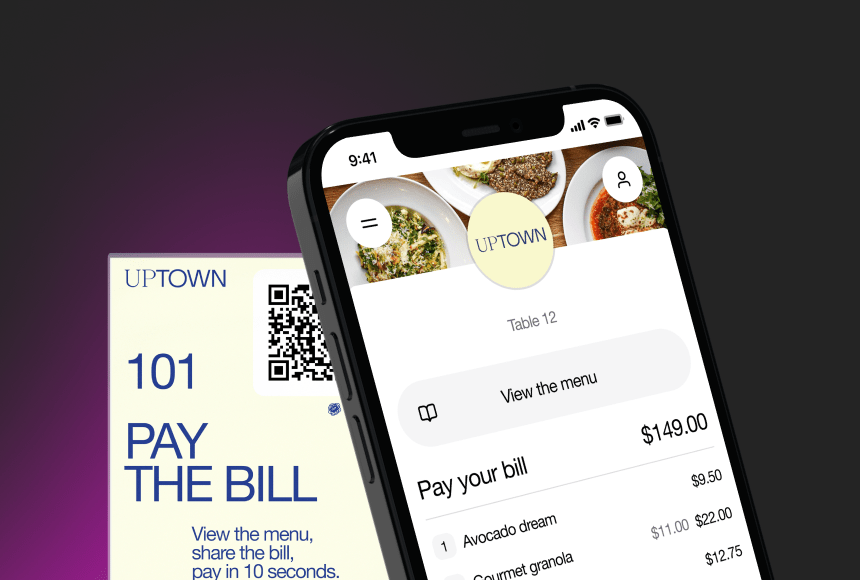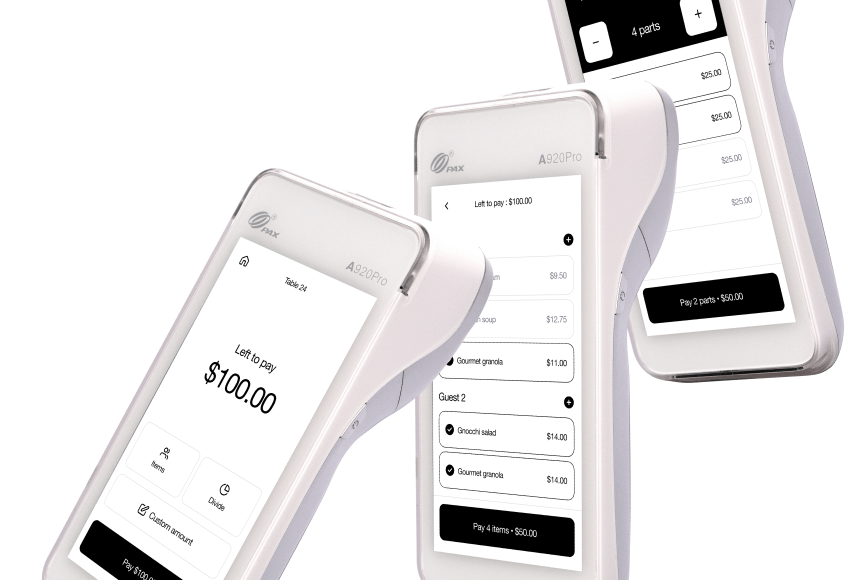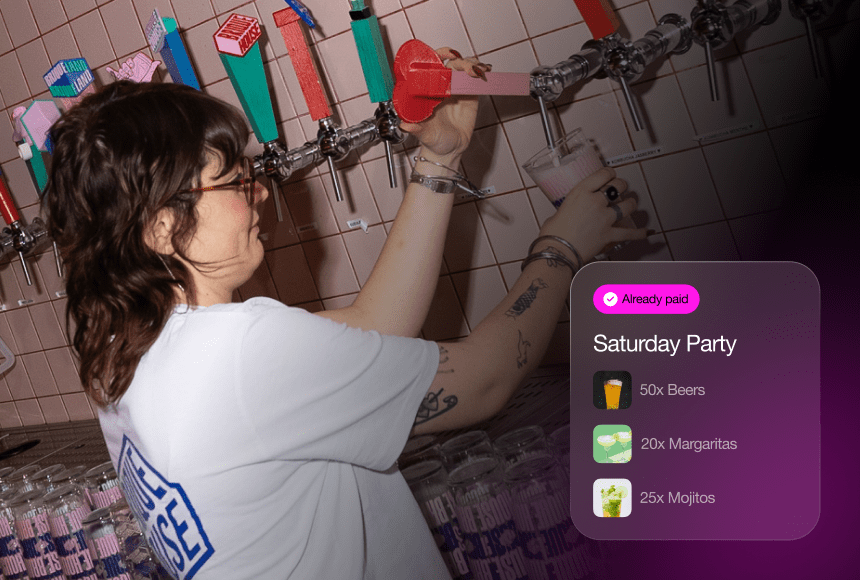
QR Code Payment Trends for Restaurants in 2025
A Rapidly Evolving Payment Landscape
Walk into any restaurant in 2025, and you may notice something missing from the table: the traditional check presenter. Instead, you see a small QR code that allows diners to pay in seconds. While this sort of contactless payment caught on rapidly during the early 2020s, it’s now become a standard, not a novelty. According to the National Restaurant Association, nearly 70% of American restaurants now provide a QR code payment option, underscoring how dramatically dining expectations have shifted.
But how exactly are QR code payments continuing to evolve—and what do restaurant operators need to know to keep pace? Below, we’ll explore the biggest trends shaping how guests settle their checks in 2025, from embedded loyalty programs to seamless currency conversion, and how these innovations help restaurants thrive in an increasingly digital world.
1. Beyond Menus: Full-Service QR Code Solutions
Not so long ago, scanning a QR code in a restaurant was just a way to access a PDF version of the menu. By 2025, those bare-bones offerings are a distant memory. Today’s diners expect robust QR code solutions that let them not only view real-time menus, but also:
- Place Orders: Guests can quickly customize dishes, add modifiers, and see an itemized preview of their bill.
- Pay the Check: One more scan at the end of the meal, or often the same code, triggers a streamlined payment process—no server or card machine necessary.
- Apply Coupons or Loyalty Points: Customers can redeem offers with a single tap, linking the discount directly to their cart.
Going “beyond menus” is all about removing friction from every step of the dining experience. Eliminating the need to flag down servers for refills, new orders, or the check has become a hallmark of the modern restaurant scene. Since every action is tracked automatically, restaurant staff can focus on personalized hospitality rather than repetitive transactions. For operators, the payoff is higher table turnover, better upselling opportunities, and more consistent data collection on guest preferences.
2. Personalization and Smart Recommendations
Picture this: A returning guest scans your QR code, and the payment system recognizes their profile from last time—possibly through an email address, loyalty account, or a quick verification text. Instantly, the interface greets them with a “Welcome back, Alex!” and suggestions based on their past orders. By 2025, such personalization has become the norm, fueled by artificial intelligence and machine learning tools integrated into QR payment platforms.
Rather than blanketing every diner with the same “recommended items,” advanced systems analyze order history, daypart trends, and even dietary preferences. Guests who love plant-based dishes, for example, might see featured vegan specials. Those who typically order a glass of red wine with dinner could receive a curated wine pairing suggestion. By the time they’re ready to pay, the platform suggests personalized offers—like a discount on a dessert they raved about last visit. This kind of targeted approach not only drives repeat business but also enhances the overall diner experience, cementing customer loyalty.
3. Instant Currency Conversion and Global Appeal
With international travel recovering post-pandemic and the continued rise of digital nomads, global tourism is once again booming in 2025. Restaurants that cater to out-of-town guests or business travelers often face the challenges of currency confusion and language barriers. Enter the new generation of QR code payment solutions, offering instant currency conversion at the point of payment.
Here’s how it often works: a visitor from Europe scans the code and sees the bill in US dollars—alongside a live conversion to euros. The system automatically calculates the final total in their home currency, letting them pay via an international digital wallet or credit card, all without the usual guesswork or extra fees. This frictionless approach eliminates confusion and helps international diners feel more comfortable spending—and tipping—when the math is transparent.
Additionally, some advanced QR code systems provide language support, allowing guests to toggle between English, Spanish, Chinese, or French so they can review the menu, payment terms, and tipping options in their native tongue. It’s a small, user-friendly detail that can make a huge difference in how foreigners experience your restaurant.
4. Embedded Loyalty and Rewards
Did you know that nearly 80% of consumers say loyalty programs make them more likely to continue doing business with a brand? As QR code payments replace cash and cards, loyalty programs have found a new home—right in the payment interface. Rather than requiring guests to download a separate app or keep track of a plastic punch card, the updated approach weaves rewards directly into the payment flow.
When diners open the payment portal, they immediately see how many points they’ve earned and whether they’re eligible for a free item or discount. Because the loyalty prompts appear at the moment of purchase, redemption rates skyrocket. Restaurants see tangible benefits in the form of increased frequency of visits and higher average ticket sizes; guests, meanwhile, appreciate the effortless process of earning and applying rewards. This integration doesn’t just streamline payment, it deepens the brand-customer relationship.
5. Gamification: Making Payment Fun
Though not every diner might crave a “gamified” payment experience, younger patrons in particular are intrigued by interactive and playful elements. From small animations when they tip generously to spinning a digital wheel for a chance to win a free appetizer, gamification creates a memorable moment right at the table.
These little touches, increasingly common in 2025, can transform an ordinary transaction into part of the restaurant’s entertainment factor. Sure, it might sound novelty-driven, but restaurants report that the sense of fun can have a measurable impact on diner satisfaction and even tip amounts. When paying is more engaging than awkward, guests leave with a more positive mental snapshot of the entire meal.
6. Seamless Integration with Tableside Ordering
In many restaurants, QR code payments have evolved hand-in-hand with tableside ordering. Think of scanning a single code at the start of your meal—not just to view the menu but to place every order, request add-ons, and pay without further scanning. This creates a continuous digital experience from appetizer to dessert.
By 2025, successful restaurants have optimized the entire flow, ensuring guests don’t need multiple codes or steps. For instance, solutions like sunday tie together ordering, tab-splitting, tipping, and loyalty redemptions into one consistent user journey. Diners can watch their real-time tab grow, confirming each item has been added correctly, then close out seamlessly whenever they’re ready. The final result: fewer mistakes, less waiting, and higher levels of customer satisfaction.
7. Security and Trust Become Table Stakes
Any digital payment trend brings security questions: Is my payment data safe? Am I about to click on a malicious code? By 2025, consumer awareness around cybersecurity has grown, leading QR code payment providers and restaurant operators to double down on data protection.
Modern QR platforms typically emphasize:
- Encryption: End-to-end encryption ensures sensitive card info never surfaces in plain text.
- Two-Factor Authentication: Higher-value transactions or first-time users might receive an SMS code or biometric prompt to confirm identity.
- Verified Codes: Legitimate QR codes usually show a secure or “verified” label. Restaurants educate guests to check for these seals before scanning.
These steps not only calm diners’ fears but also differentiate trustworthy establishments from those that seem haphazard. In an era when data breaches make headlines, showcasing robust security is now an essential piece of the puzzle.
8. Ethical Tipping Dynamics
Digital tipping can be a delicate topic. On one hand, QR-based payments can default to suggested tip amounts or even auto-calculate based on custom rules. On the other, diners don’t always appreciate pushy tip prompts, and staff want to ensure they receive their fair share.
By 2025, many restaurants address this tension with flexible, transparent tip settings. The QR code interface might present three or four tip percentages, plus a custom option. Diners see exactly how their tip is distributed—like the portion that goes to servers, bartenders, or kitchen staff if a tip-pool system is in place. When well-implemented, these features increase tip consistency and fairness, while giving diners the final say.
Ultimately, the ability to tip quickly and discreetly on a digital device can boost overall gratuities. As a bonus, staff no longer need to awkwardly linger while guests fumble with wallets or sign paper slips, creating a more pleasant final impression for everyone.
9. Voice-Assisted and AR-Enhanced Payments
As voice technology and augmented reality (AR) continue to mature, forward-thinking restaurants are experimenting with these mediums to refine the payment experience. Some solutions integrate voice commands—for instance, a user can say, “Confirm payment” or “Add a 20% tip” in their smartphone’s voice assistant without tapping any buttons. This approach particularly benefits diners with accessibility needs or those who prefer a hands-free experience.
AR, meanwhile, is cropping up in specialized restaurants that want to showcase an interactive twist. Imagine scanning a code and seeing your itemized receipt floating in front of you via your phone’s camera. Tapping each dish reveals a mini 3D model or a short video of how it was made. While such experiences are still niche, they illustrate how technology can transform even the typically mundane act of paying into an engaging part of the meal.
10. Data-Driven Insights for Operators
Restaurants aren’t the only ones benefiting from QR code payment. By capturing every scan, order, and transaction digitally, operators gain a treasure trove of data. This includes:
- Peak Dining Hours and Table Turn Time: Precisely track how long diners spend from ordering to payment.
- Sales Analytics: Identify which dishes are consistently popular and which combos boost average ticket sizes.
- Demographic Trends: In some systems, guests can opt to share age range or location data, helping restaurants refine their marketing strategies.
By 2025, most advanced POS (point-of-sale) systems connect with these QR payment platforms, automatically compiling in-depth reports. These insights empower restaurants to adapt menus, tailor promotions, and staff more effectively—ultimately delivering a better experience for both sides of the table.
11. Evolution of Contactless Kiosks and Hybrid Models
While QR code scanning via a personal smartphone is the most widespread method, some restaurants add on small contactless kiosks or tablets at each table. Why? Because not all diners are equally tech-savvy or comfortable scanning codes. These mini-stations can run on the same platform as the QR code solution, so the interface remains familiar.
In 2025, we’re seeing a push towards hybrid approaches:
- QR Codes on Tables: For those who want to order and pay on their own device.
- Shared Table Tablets: Acting as a backup or an accessible alternative, especially for older patrons or anyone with a low phone battery.
- Staff Assistance: Servers can place orders through a handheld device linked to the same system, ensuring a uniform experience across the restaurant.
This layered approach caters to different comfort levels without alienating anyone. The end result is a streamlined operation that covers all bases.
12. Growing Adoption of Cryptocurrency Payment
While still not the primary method for most diners, the steady rise of cryptocurrency in everyday transactions has begun to edge into the restaurant realm by 2025. For guests who hold digital assets—like Bitcoin, Ethereum, or stablecoins—some restaurants now feature a “Pay with Crypto” option directly within the QR payment screen.
It’s a niche feature, but certain locales with large crypto-savvy populations or tourist traffic might find it valuable. Plus, as stablecoins become more mainstream, the concerns about volatility lessen, making digital asset payments more appealing to both businesses and consumers.
If nothing else, offering a crypto payment option can convey an image of tech-forward thinking—useful for marketing and attracting a younger, trend-aware crowd. Just be sure to partner with a reliable payment processor that simplifies the currency conversion or deposit process if you’re not comfortable holding crypto yourself.
13. Sustainability Gains and Paperless Operations
As the hospitality industry doubles down on eco-friendly initiatives, going paperless is a tangible way to reduce waste. Eliminating printed checks, receipts, and sometimes even menus can significantly lower a restaurant’s environmental footprint over time. QR code payments align perfectly with this shift, letting guests receive digital receipts via email or text messages rather than a slip of paper.
Some restaurants also highlight these green credentials to diners—“You just saved one sheet of paper!”—adding a feel-good factor to each payment. By 2025, it’s become more common for businesses to measure and communicate how many trees or gallons of water they’re saving by going digital. This transparent approach resonates with diners who make purchasing decisions based on sustainability.
14. Elevated Tipping, Reviews, and Feedback Loops
A final hallmark of advanced QR code payment trends in 2025 is the integration of post-payment engagement. Right after diners pay, they might be prompted to:
- Leave a Review on Google: A direct link that seamlessly transitions them to your business listing, encouraging more real-time, positive feedback.
- Fill Out a Quick Survey: Restaurants can gather immediate insights on food quality, service, ambiance, or other metrics that matter. This data helps refine operations and address issues on the spot.
- Share on Social Media: Some solutions add a built-in social share option, letting guests post a quick photo or mention their visit with minimal effort.
These features capture customers’ attention while the meal is fresh in their minds. Because it’s frictionless (a single tap after payment), feedback volumes and customer engagement increase. The result? More reviews, more promotional buzz, and more refined operations guided by actual diner input.
15. Charting the Path Forward
Looking at 2025, it’s clear that QR code payments aren’t just a fleeting tech fad. They’ve become ingrained in how modern restaurants do business, offering a host of benefits: faster service, real-time personalization, integrated loyalty, and robust data insights, all wrapped in a user-friendly digital package. Diners, especially younger demographics, now consider it normal to grab their phone and handle the entire dining transaction at their fingertips, with minimal staff intervention.
For restaurants, staying ahead means continuously refining the user experience—ensuring security, convenience, and creativity come together smoothly. While each restaurant’s approach might differ based on branding and clientele, adopting flexible QR code systems like sunday can transform how quickly and effectively you serve your guests. And as we’ve seen, these convenient checkouts often drive higher tips, better reviews, and elevated loyalty.
In the end, the best payment experience is one that diners barely notice—because it’s so quick and seamless they can focus on what truly matters: enjoying the food, the conversation, and the atmosphere you’ve cultivated. By harnessing the trends shaping QR code payments, you can deliver that experience with both style and substance, ensuring your restaurant thrives in an ever-evolving digital landscape.
Find out more today
Drop us your details below and we’ll reach out within the next 24h
“Check please” is a thing of the past.
With our integrated QR codes your customers pay in seconds, straight from their table.



